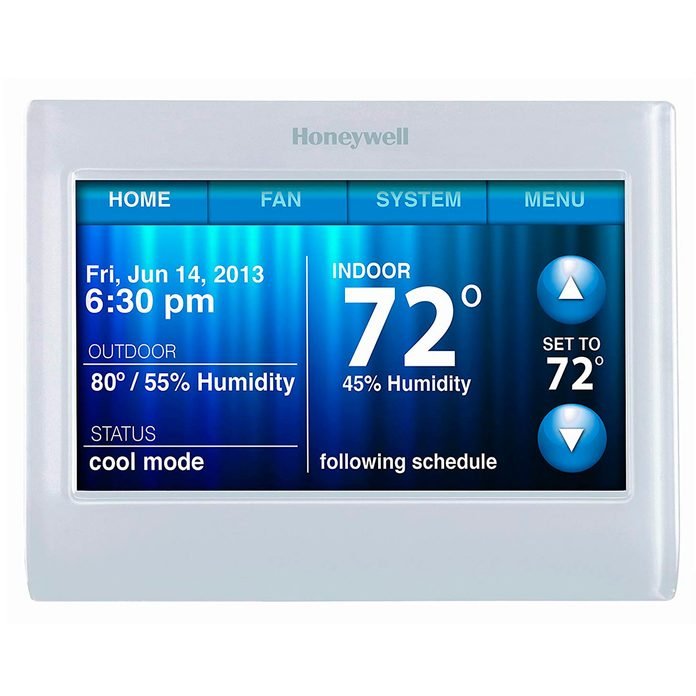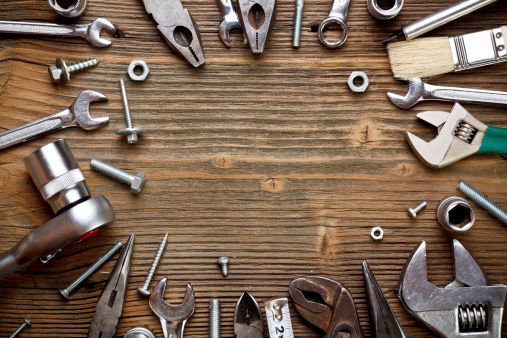
Anti theft systems are devices installed where valuable items can be accessed without permission. They protect merchandise by providing locks, RFID tags and GPS locators, which can be used to track the location of stolen items. There are many kinds of anti-theft system, so you have to make the right choice for your situation and budget. Below are some of the benefits for each type. Read on to learn more! You can also install an Anti-Theft System yourself.
Cost of anti-theft devices
Even though the cost of installing anti theft devices can be costly, the benefits they provide is well worth it. For starters, most cars come with an Audible Alarm System, which is easy to install and operate. These alarms are sensitive and can go off frequently, which can be annoying for people passing by. Others devices can be more complex, like remote-disabling system that connects to a smartphone or another electronic device. These devices are, however, more expensive than most people realize.
Insurers recognize the value of anti-theft devices, and are willing to provide discounts for them. Insurers want to protect their insured properties, so the devices not only help prevent thieves but also allow them to track their vehicles. Drivers who use anti-theft technology can receive discounts from top auto insurers. Insurance companies encourage the use of anti-theft technology because it is such a common feature.

Installation
Some automakers require the installation anti-theft system in cars and other vehicles to guard against carjackers. These systems are required under United Kingdom regulations and UN regulations. SIAM India and the European Transport Safety Council also require vehicle tracking systems and immobilizing devices. These systems are an increasingly common feature for many cars and vehicles. But why do some automakers make the choice to add such a safety feature? There are several reasons.
Factory-made anti theft systems are the most efficient because they are fully integrated within the powertrain control modules and the body control module. These systems emit an audible alarm, hidden second horn and flash warning lights when the vehicle is not locked with a key. Many aftermarket antitheft systems offer remote start, disabling and GPS tracking. Consider hiring a professional to install aftermarket anti-theft devices if you aren't satisfied with their quality.
Disablement
Anti-theft devices can often be heard on your car. These systems may make it easier for thieves to steal your vehicle, but they can also be dangerous. If you have a dead key fob battery or any other issue with the keys, you can disable these systems. Here's how. If your anti-theft device keeps chirping, clicking or beeping, here's what you can do.
The first thing you should do is disable the anti-theft system on your car. This will prevent thieves from getting into your car by disabling the engine. Once the security light has been disabled, it is important to check that it is still on. You will see it either red or green. Next, insert your keys into the ignition. Allow the engine to start up again for approximately 10 to 15 minutes. If your car's light does not blink, it has an anti theft system.

Benefits
Anti theft systems can be a great way to protect your company from losses by stopping thieves from stealing your goods. These systems have numerous benefits. The security systems not only deter thieves from taking your products but also decrease shrinkage and confrontational incidents. This will make you business look better than ever! Let's look at the main benefits of anti-theft systems in greater detail.
Anti-theft products protect your retail merchandise and vehicles from theft. Anti-theft systems can include locks, RFID tags, GPS locators, and other technology to keep your merchandise safe. They can also alert store employees if something is missing. The ability to reduce theft can help you keep your prices low and make it easier for you to sell more products. However, the best thing about these anti theft systems is that they protect your business from theft and can save you money.
FAQ
What is the distinction between a mechanic or an automotive technician?
These two jobs are very similar but not identical. A mechanic repairs cars and an automotive technician performs maintenance.
A mechanic needs to be able and quick to use their manual dexterity. A mechanic should also be able accurately diagnose and repair problems.
An automotive technician is required to have more technical knowledge than a mechanic. They must be able and able to read blueprints as well as use tools like drills or wrenches.
They should be able safely to perform complex procedures. They must also be familiar with different types of engines and electrical systems.
They must also be able to understand how various parts interact with each other.
As a result, mechanics typically make less than technicians. Both jobs offer many possibilities.
How can I prepare for a apprenticeship as a mechanic?
Understanding what you're getting into is crucial. You need to understand the mechanics of cars and how they work. This way, you know where to start when you go on your first day at the garage.
It is also important to be able to fix small problems like broken lights or tires.
These lessons will help you to identify and fix problems.
You'll also need to know how different parts fit together to put them back together again.
Finally, you need to be able to safely and efficiently use tools.
These are all things that will make you a competent mechanic.
How long is an apprenticeship for an automotive mechanic?
An automotive mechanic apprenticeship takes around three years to complete. The apprenticeship includes two years studying at school and two more as an apprentice. The first year of training is spent in the trade. This includes theory and practical skills as well as safety procedures. You'll also learn the safe and efficient use of tools during this first year. After you have completed the first year of training, you will be able to spend an additional year on-the job learning different trades. These periods will also give you the chance to take formal courses.
The last year of your program will be spent earning qualifications and becoming certified. These include NVQs, which are obtained after passing industry-specific exams. The HNCs (Higher National Certificates), on the other hand, cover general subjects like customer service and management. Finally, there are City & Guilds certificates that are offered for those who wish to become qualified in certain trades.
What kind of car mechanic jobs exists?
For car mechanics, there are three main areas for employment:
-
Automotive repair shops
-
Dealerships
-
Independent garages
Automotive repair shops
This is where most people first think of becoming a mechanic. It's also the easiest way you can get started. Either work for someone else's shop or you can start your own.
If you are interested in working at a shop you will need to apply for membership to a union. Once you're accepted into the union, you'll receive training from the union.
Once you complete the training, it's time to get started.
If you decide to open your own garage, you'll need to register with the government. You'll need to meet certain standards after you register.
Once you register, you'll receive a license that allows you to operate your garage.
You can sell spare parts or do minor repairs with your license. It will not allow you to repair major engine problems.
In addition to selling spare parts, you'll also be expected to offer advice and guidance to customers.
Dealership jobs
Most dealerships only employ mechanics who have a specific skill set. For example, they might only deal with brakes or only replace tires.
Some dealers also have general mechanics that can handle all aspects.
These positions often require applicants to undergo specific training before being allowed to work. This allows employers to pick the right candidates for their jobs.
Some dealerships will hire graduates straight from college. These graduates are familiar with the fundamentals of mechanical engineering so they can easily learn about cars.
Independent garages
Independent garages don't belong to any particular dealership. Instead, they focus on high-quality customer service.
Independent garages have the ability to afford higher wages, as they aren’t associated with any one company. These jobs generally pay better than those at dealerships.
However, independent garages do not necessarily offer better workplaces. Many business owners prefer to own their businesses and not delegate the responsibility to others.
You may find yourself working for long hours and not having control over the day.
Additionally, you should expect to earn lower wages if employed by a dealership.
The good news? You can easily switch between different types of jobs. It is possible to switch between different types of jobs if your current employer would prefer you to work at a dealer.
Alternativly, you can apply directly to the garage owner if you are interested in working at an independent garage.
The bad news? Finding a new position isn't always easy. There are many other factors that can influence your earnings.
It could be the type and cost of labor you use to repair your vehicle.
Is it hard to get work as an auto mechanic?
Yes, it can be very easy. Garages often advertise their jobs online and people just apply because it seems fun. Try applying to a few jobs and seeing if the garages accept student applications. Another option is to ask family members and friends if anyone works in this industry. They may be happy and willing to recommend someone.
Statistics
- According to the BLS, total auto technician employment is expected to exceed 705,000 by 2030. (uti.edu)
- The U.S. Bureau of Labor Statistics (BLS) reports that the job outlook for automotive service technicians and mechanics is expected to decline by 4% from 2019 to 2029. (indeed.com)
- According to the BLS, the median annual salary for automotive service technicians and mechanics in the United States was $44,050 in May 2020. (uti.edu)
External Links
How To
How to properly diagnose your car for repair
To determine if your car needs repairs, you should first look at the symptoms that your car presents. Then, follow these steps to diagnose your vehicle properly.
-
Check engine lights. Inspect the dashboard light indicators. These include the engine lights, the oil pressure gauge and the battery light indicators. The RPM gauge and coolant temperature gauge should also be checked. You may have a problem with your vehicle if any of the indicators are flashing for more than a few days.
-
Take a look at the treads. If the tires are worn out, they could cause problems with handling and braking. The treads of the wheels should be inspected as well. You should ensure that they are clean and smooth. This can be done by removing the wheels from the vehicle and taking them off. To check the condition of your treads, use a flashlight.
-
Monitor the level and consistency of your brake fluid. Keep track of the brake fluid level in your vehicle. This ensures that your brakes work properly. If your brake fluid level is low they might not work properly when you apply pressure.
-
Test the suspension system. Vehicles usually have a suspension system that helps absorb shocks and vibrations while driving. It gives you better control and allows for smoother accelerations and decelerations. If your vehicle has a suspension problem, it might feel wobbly or shake uncontrollably. If you are unsure if your vehicle is suffering from a suspension problem, put weight on the front and rear axles to check the movement.
-
Examine the steering column. Steering columns are used to connect the steering wheel to the rest of the vehicle's components. Sometimes, steering columns are damaged by accidents. If yours feels loose or shaky, you should replace it.
-
The exhaust pipe should be observed. The exhaust pipes are responsible for moving gases from the combustion chamber into the atmosphere. If your exhaust pipe leaks or cracks, it will allow harmful fumes into your cabin. Additionally, your tailpipe should be fixed immediately if it is bent.
-
Check under the hood. If you see anything unusual, take a look under the hood. You could have fluids leaking from the engine. In addition, if you notice an unusual smell coming from your engine compartment, you should contact a professional technician.
-
Make sure to check the air filter. The air filter in your vehicle collects dirt and dust from the environment. Dirty air filters can cause your vehicle to run poorly. Replace your air filter regularly.
-
Check the fan belt. The fan belt that connects your vehicle to the transmission is called the engine fan belt. If the fanbel breaks, your engine won't turn. It is easy to replace the belt. You will need a screwdriver, pliers and a pair of pliers.
-
You should inspect the radiator and hoses. The radiator hose transports water from radiator to engine. It can cause hot liquid to leak onto the engine if it is damaged or cracked. To repair the hose, you will only need to use a pair needle-nosepliers and a wire brush.
-
The windshield wipers should be checked. Windshield wipers use electricity to clean away snow and rain. If they stop working, they could leave streaks on your window glass. Simply change the washer oil to fix the problem.
-
Check the battery cables. The batteries provide power to the electrical systems within your car. When you replace batteries, make sure to disconnect the negative cable first. Failure to do so can damage your alternator.
-
Be sure to check your headlights. Headlights are used to illuminate the road ahead. They can make it difficult to see if they stop working. To check if the bulbs have gone out, you can inspect them.
-
Always check your lights. When you approach them at night, the lights warn other drivers. If one doesn't work, it could distract you and lead to an accident.
-
You should inspect your brakes. Brakes slow down your vehicle before a collision. You may lose control of your vehicle and crash if the brakes don't function properly.
-
Check the oil regularly. Your engine will stay lubricated by the oil. It protects metal parts and prevents them from wearing too quickly. Changing the oil every month is recommended.